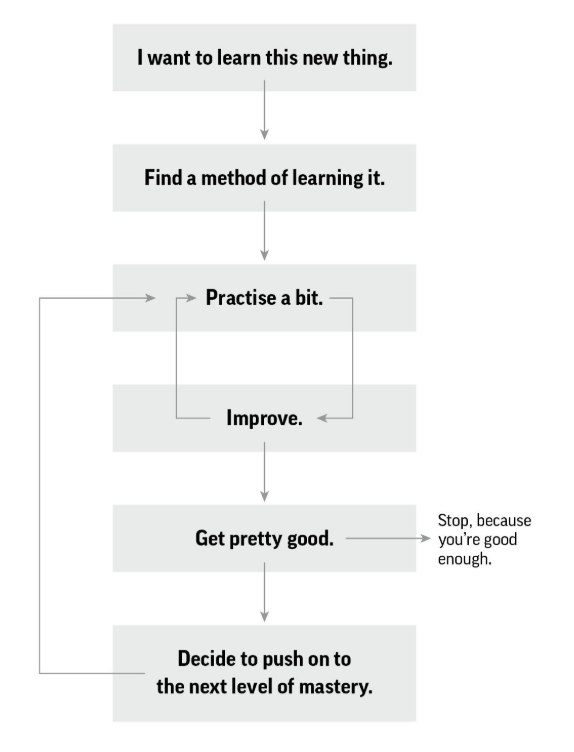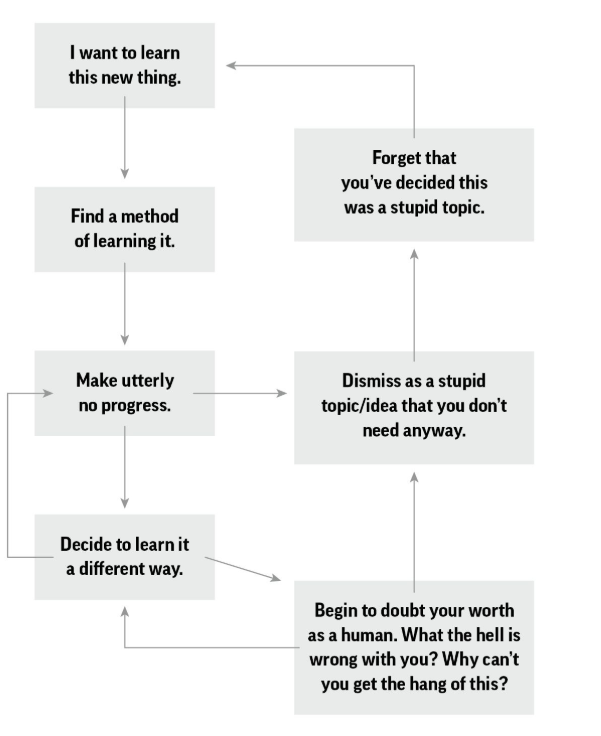
I’ve talked about change being hard and the brain being hardwired against change, but humans cope with change all the time – we are pretty good at adapting to change and learning new things.
But some things do seem to be more difficult. Losing weight, perhaps. Or getting up early.
I’ve recently read Michael Bungay-Stanier’s book “The Advice Trap” where he distinguishes between Easy Change and Hard Change. I love his flow diagrams for these so I’ll share them here.
Easy Change is straightforward. You start out not knowing something, understand what you need to learn, practise it, and improve. All you need is access to some knowledge (a book, a teacher, a YouTube video) and then you try it.

Hard change is much more of an effort. You think you know what you have to do, but you fail, try again, fail again, and keep coming back to it. Knowing how to do something is not enough. You need to shift your mindset and behaviour, but something’s stopping you from making progress.

What’s easy or hard depends on the individual and their previous experience. What is easy for you might be hard for me. Some people have no trouble losing weight or getting up early.
This idea of hard and easy change is actually based on what Heifetz and Linsky (2002) refer to as adaptive change vs technical change in organisations.
Technical problems, while challenging, can be solved by applying existing know-how.
Adaptive problems, however, require transformational change, with all individuals within the organisation shifting their behaviour. This is uncomfortable and will likely be met with resistance and difficulty.
The danger is that people may try to respond to an adaptive (hard) problem with a technical (easy) solution – doing what they’ve done before. Alternatively, you can waste a lot of time, money and effort thinking something is an adaptive challenge, when really it just requires a technical solution.
Knowing whether you’re dealing with a hard or easy change is an important step in making the change.
References:
Bungay-Stanier, M. (2020) The Advice Trap: Be Humble, Stay Curious and Change the Way you Lead Forever” Toronto: Box of Crayons Press
Heifetz, R. and Linsky, M. (2002) “A Survival Guide for Leaders”, Harvard Business Review, June 2002